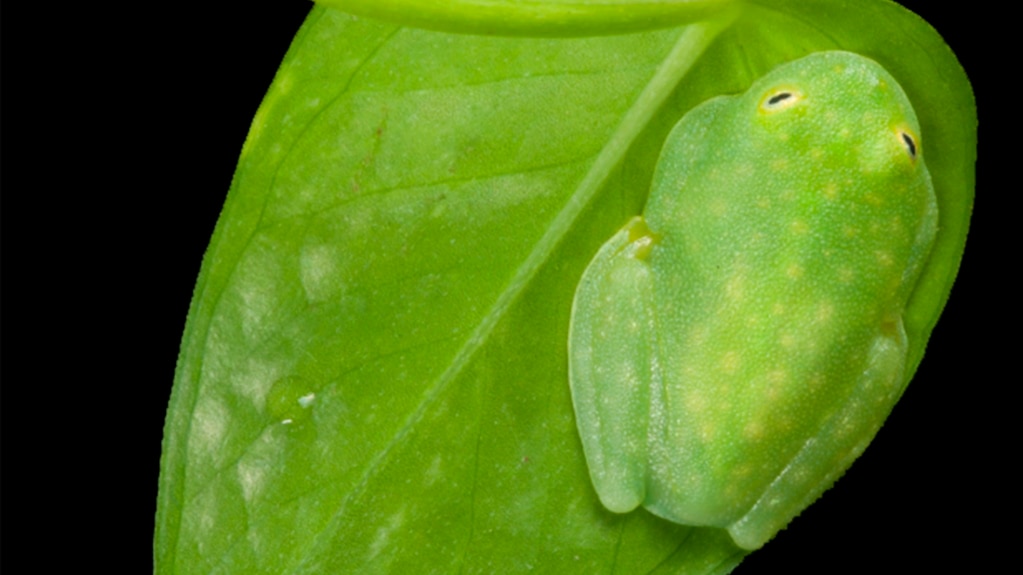Some frogs found in South and Central America have the unusual ability to turn on and off their nearly clear, or transparent, appearance.
During the day, these frogs sleep by going underneath tree leaves. Their small bodies do not create shadows, making them almost invisible to birds and other predators that might consider them food.
But when northern glass frogs wake up and move in search of insects and mates, they take on a partly clear, reddish-brown color.
Researchers recently published the findings in Science.
Junjie Yao of Duke University was a co-writer of the study.
“When they’re transparent, it’s for their safety,” Yao said about the frogs.
When the creatures are awake, they can escape predators. But when they are sleeping, they are more likely to be eaten. Yao explained, “They have adapted to remain hidden.”
Adapt means to change one’s appearance or behavior in order to live in a place or situation.
Using light and special imaging technology, the researchers discovered the frogs’ secret. While asleep, the frogs move, or “hide,” nearly 90 percent of their red blood cells in their liver.
Because they have clear skin and other tissue, it is the blood moving through their bodies that would otherwise give them away.
The frogs also shrink and pack together most of the organs inside their body, Yao said.
The research “beautifully explains” how “glass frogs conceal blood in the liver to maintain transparency,” said Juan Manuel Guayasamin of University San Francisco of Quito, Ecuador. He was not involved in the study.
Exactly how the frogs carry out these changes, and why it does not kill them, remains unknown. For most animals, having very little blood for several hours would be deadly. But somehow, the frogs survive.
Further research on the species could provide useful information for the development of medicines that prevent blood from clotting, said Carlos Taboada of Duke University, a co-writer of the study.
Only a few animals, mostly creatures that live in the ocean, are naturally transparent, said Oxford University biologist Richard White, who was not involved in the study. “Transparency is super rare in nature, and in land animals, it’s essentially unheard of outside of the glass frog,” White said.
Those that are transparent include some fish, shrimp, jellyfish, worms and insects — none of which move large quantities of red blood through their bodies. Frogs seem to be the only creatures able to hide blood while sleeping.
White used the term dynamic, meaning always active or changing, to describe the frogs’ ability.
“It’s just this really amazing, dynamic form of camouflage,” he said.
I’m John Russell.
Christina Larson reported on this story for the Associated Press. John Russell adapted it for VOA Learning English.

